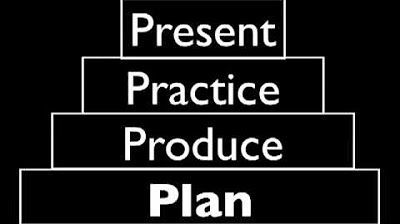The Oscar-Nominated Editor That Has One Rule
Summary
TLDRThis in-depth interview with Oscar-nominated editor Yorgos Lamprinos explores the art of editing as a narrative tool. Lamprinos, known for his work on films like 'The Lobster' and 'The Killing of a Sacred Deer,' discusses the power of 'non-edit' and the strategic use of time to enhance storytelling. He shares insights on how music can dictate the rhythm of a scene and the importance of holding shots to allow the story to unfold naturally. The conversation delves into the nuances of editing, emphasizing the subtle yet impactful choices that can elevate a film's emotional resonance and immerse the audience in the narrative.
Takeaways
- 🎬 The importance of 'non-edit' situations in film editing, where the scene's code is transmitted without cutting, allowing the shot to speak for itself.
- 📹 The use of time as a narrative tool in editing, holding on a shot to create tension and anticipation, and letting the audience beg for the reveal.
- 🎼 Music acts as a metronome in editing, guiding the rhythm of a scene and determining the movie's cuts alongside the actors' performances.
- 👩💻 The editor's role in supporting an actor's performance by choosing the right takes and focusing on authenticity over pretense.
- 🕊️ The concept of motifs in film, where repeated elements expand the audience's understanding and connection to the story.
- 📚 The power of editing to create an impactful experience for the audience, even if they don't consciously notice every detail.
- 🔍 The strategic use of black and white imagery to express power dynamics and contrast emotions within a scene.
- 🎹 The role of the piano as a recurring motif, acting as a metronome to punctuate and give rhythm to the narrative.
- 👥 The interconnectedness of different storylines in a film, using motifs and timing to create a conversation between them.
- 🎞️ The challenge of editing complex scenes, where the music and performances must align to convey the intended narrative and emotions.
- 🏆 The Music Bed Challenge, a 30-day short film competition that encourages filmmakers and content creators to create and submit their work for recognition and prizes.
Q & A
What is the key editing philosophy discussed by the Oscar-nominated editor in the transcript?
-The key editing philosophy discussed is the 'non-edit' or 'less is more' approach, which emphasizes the importance of holding on a shot to let the scene's code be transmitted without unnecessary cuts.
How does the editor describe the use of time as a narrative tool in the transcript?
-The editor describes using time as a narrative tool by weaving different scenes chronologically and having them converse with each other, creating a deeper viewer experience.
What is the significance of the 'non-edit' situation in the kitchen scene with the character presenting a threat?
-The 'non-edit' situation in the kitchen scene is significant because it allows the tension and threat to build naturally without cutting away, making the scene more impactful.
How does the editor utilize music in the editing process?
-The editor uses music like a metronome, allowing it to determine the movie's cuts and the rhythm of the scenes, enhancing the storytelling.
What is the 'Ninja Cut' mentioned in the transcript, and how was it used?
-The 'Ninja Cut' is a technique where there is a quick transition between shots, such as cutting between a character's face and a finger. It was used to create a more impactful scene by showing the whole finger-cutting incident in one go.
How does the editor create tension in the scene where a character is asked to cut off a finger?
-The editor creates tension by using short cuts between shots, a simple and clean editing style, and the rhythm of the music to surprise the audience and build anticipation.
What is the role of motifs in connecting different storylines in the film?
-Motifs are repeated elements that help the audience make connections between different storylines. They grow in understanding and feeling each time they reappear, enhancing the narrative coherence.
How does the editor approach the editing of a scene to support an actor's performance?
-The editor focuses on finding the best performances first and then constructs the scene around them, using elements like black and white material and music to enhance the storytelling and character portrayal.
What impact did the editing have on the audience during a screening in Athens as mentioned in the transcript?
-The editing had a strong impact, causing one person to faint due to the intensity of a scene, which indicates the effectiveness of the editing in creating a powerful emotional response.
How does the editor describe the difference between a performance and being in the context of editing?
-The editor describes the difference as seeking authenticity in the actor's portrayal, where 'being' refers to the actor's genuine presence in the situation without pretending, which is more valuable than a rehearsed performance.
What is the significance of the black and white imagery in the film as discussed in the transcript?
-The black and white imagery signifies a power dynamic and the contrast between characters, such as Raymond's dominance and Robert's subordination, and serves as a visual tool to enhance the narrative.
Outlines

Cette section est réservée aux utilisateurs payants. Améliorez votre compte pour accéder à cette section.
Améliorer maintenantMindmap

Cette section est réservée aux utilisateurs payants. Améliorez votre compte pour accéder à cette section.
Améliorer maintenantKeywords

Cette section est réservée aux utilisateurs payants. Améliorez votre compte pour accéder à cette section.
Améliorer maintenantHighlights

Cette section est réservée aux utilisateurs payants. Améliorez votre compte pour accéder à cette section.
Améliorer maintenantTranscripts

Cette section est réservée aux utilisateurs payants. Améliorez votre compte pour accéder à cette section.
Améliorer maintenantVoir Plus de Vidéos Connexes
5.0 / 5 (0 votes)






